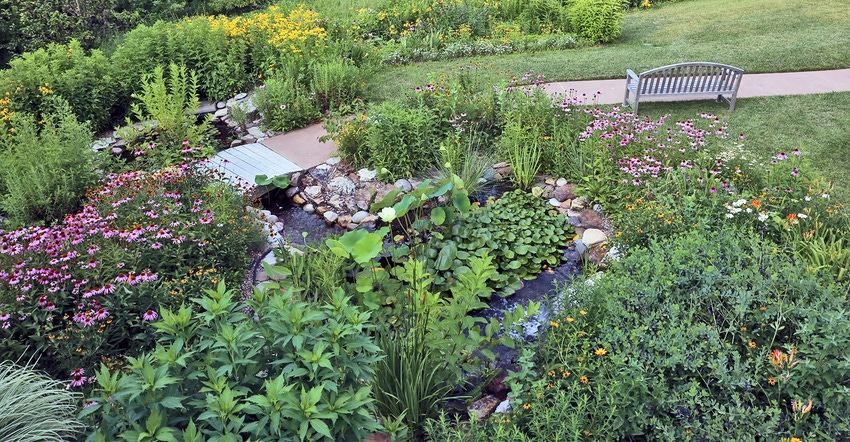April 20, 2018

By Scott Woodbury
Turfgrass has a place in the native garden when you get it just right. Too much lawn, and you may spend too much time behind a mower. Too little, and you may end up with more garden than you can care for. If it’s too weedy, the neighbors may complain; if it’s weed-free, you may risk harming wildlife. So where is the sweet spot for turfgrass?
For starters, as a country we mow a lot of grass. Doug Tallamy, author of “Bringing Nature Home: How You Can Sustain Wildlife with Native Plants,” says that we mow more than 40 million acres of turf in the U.S. — more land than all the national parks combined.
Nationwide, the landscape is dominated by turfgrass. Our tendency to grow low-clipped grass dates back hundreds of years to Europe, where it began with the original lawn mowers: grazing sheep. These lawns kept views open across the landscape to create emphasis on the house. They still do this to a large extent, though the average house today has a much smaller lawn.
Low-maintenance options
In the United States, schools, parks, churches, corporations, golf courses and homes have more turf than any other type of plant, much of which has little function other than looks. Too much of a good thing? Perhaps.
One low-maintenance option is small native flowering trees. Focus on difficult-to-mow areas first. Poorly drained sunny sites are suited to buttonbush, winterberry holly, red buckeye and green hawthorn. Buttonbush and winterberry holly are shrubs when young, but grow into small trees over time, especially when pruned. For drier areas plant redbud, flowering dogwood, serviceberry, or fringetree. Use of these types of trees reduces some mowing and increases wildlife habitat, because many birds nest in low trees like these.
Another low-maintenance option is native groundcovers. These are plants that grow low and fill in densely to reduce weed growth. In shady, wet areas plant golden groundsel, a native evergreen alternative to the highly invasive and over-used non-native wintercreeper, vinca and English ivy. In sunny, dry areas, prairie dropseed makes a solid groundcover (place plants 16 to 18 inches apart).
High-maintenance greenery
For those who have more ability and time to garden, I recommend replacing 15% to 20% of your lawn with a diverse mix of perennials, grasses and shrubs, plus small flowering trees and groundcovers. But keep in mind that the more area you convert and the greater the diversity of the plants, the more time it will take to plant and care for. If you are unsure what you are capable of, start small (100 to 200 square feet).
Expand the garden after you get your feet wet. Include walking paths around (if small) or through (if big) the garden, so you can easily see and care for it. Place a bench nearby in shade so you can experience it. After all, native gardens should be experienced, not just seen.
Woodbury is curator of the Whitmire Wildflower Garden at Shaw Nature Reserve in Gray Summit, Mo., and an adviser to the Missouri Prairie Foundation’s Grow Native! program.
You May Also Like




